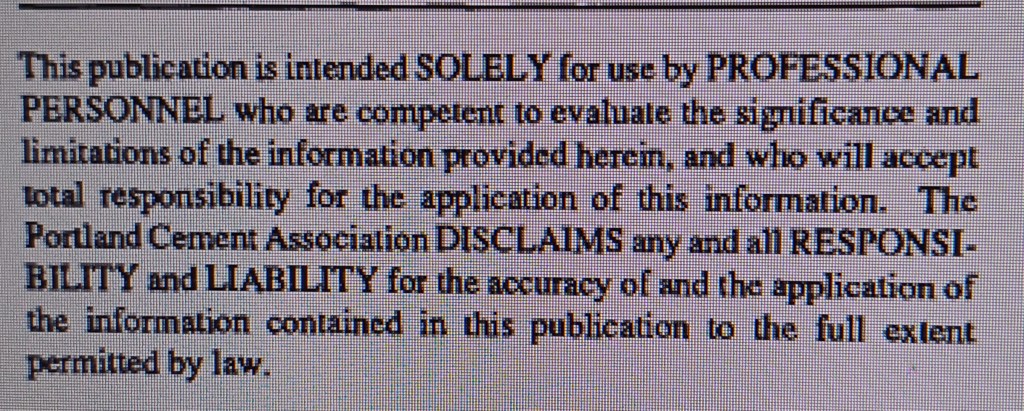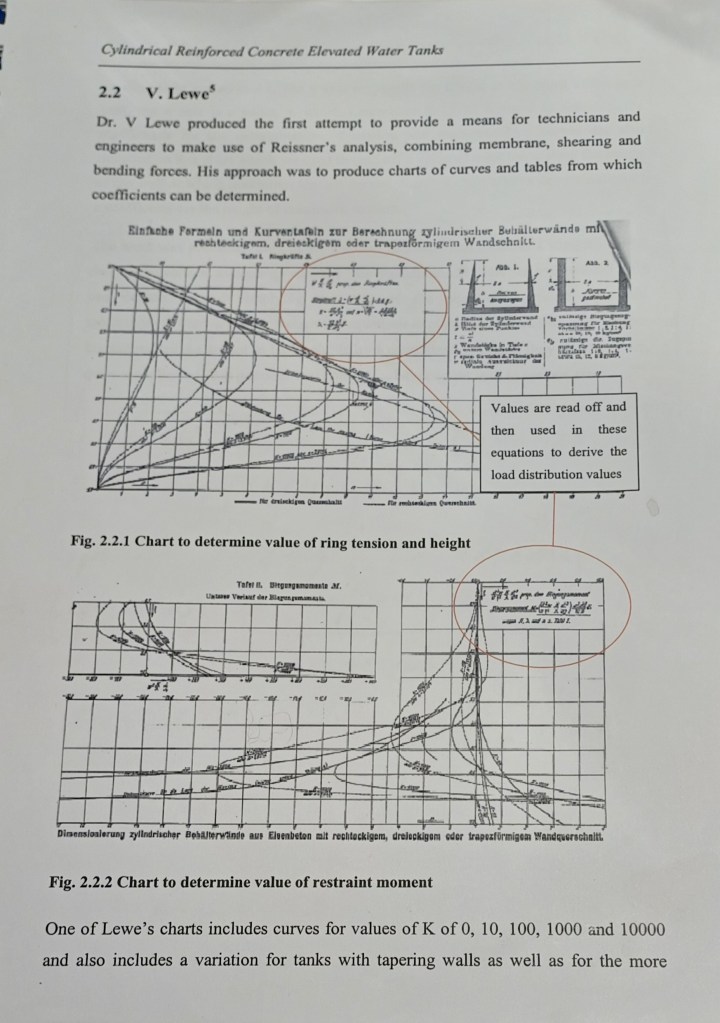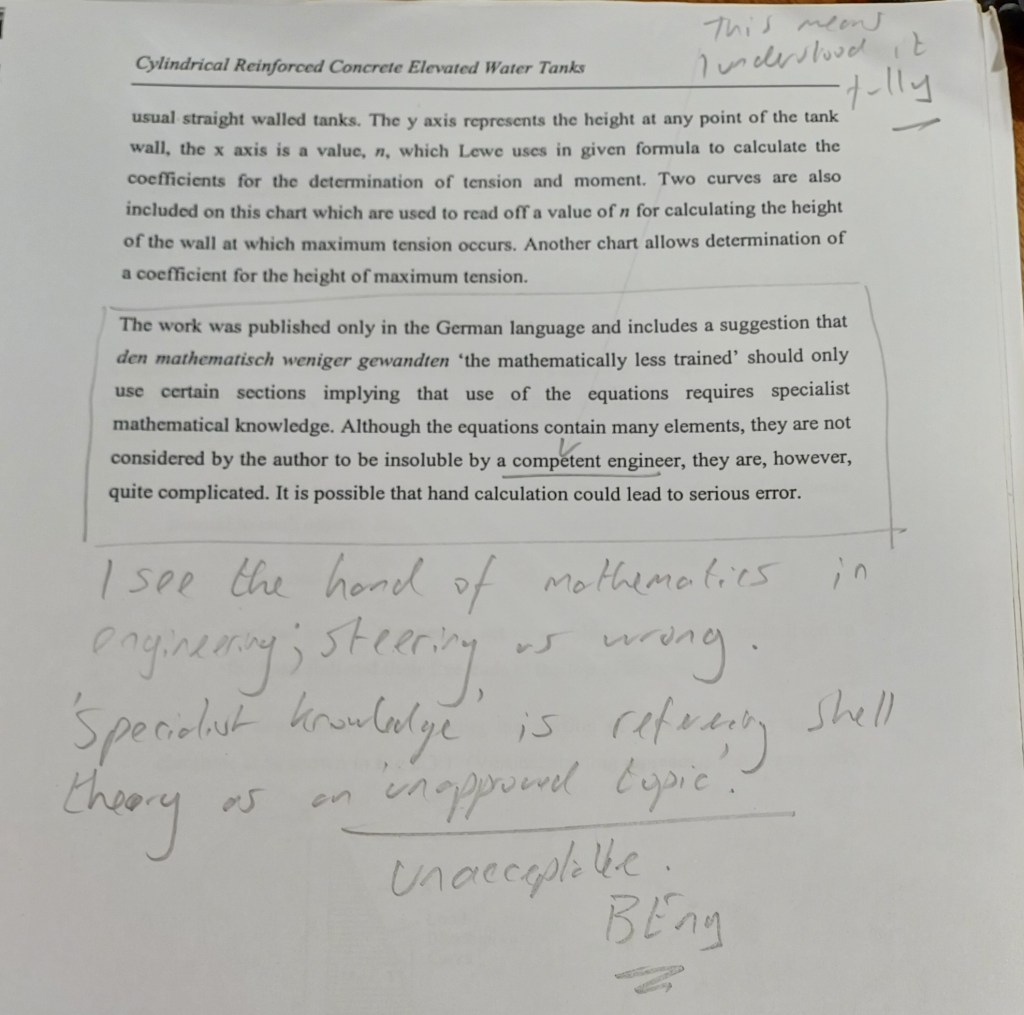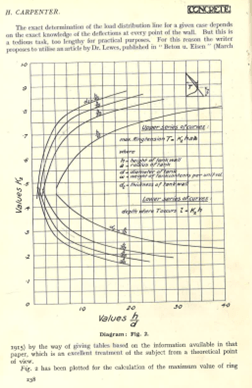Link to dropbox for full thesis. Note the pencil scribbles are from Summer 2023 when I (apparently very excitedly) rediscovered Lewe through my work on gravity and the speed of light, and challenging the constancy of the value of both.
https://drive.google.com/drive/u/0/folders/1JjeZNhILW45wjXHbX4Y-LEvYx92wv2KK

Introduction
In the Spring of 2008, I was 44 years old and completing a Civil Engineering Degree. I was at the end of a period of part time education that had begun seven years previously, and I was sick and tired of the whole thing; desperate for it all to be over. The research and bulk of the writing was completed in the hallowed aisles of the library in Great George Street, at the home of the Institution of Civil Engineers and , despite my despair at the state of the education system I had forced myself through, I was given a topic that really piqued my interest, and so I endeavoured to give the project my very best effort; one final push. In my research I found that a source document for the engineering design practice, Circular Concrete Water Tanks without prestressing, PCA(1) had NO REFERENCE, and indeed this source document seemed to delight in the fact, with this note:

My question was: well, what theory is that then? If it’s at least fifty years old, then it has clearly stood the test of time, why not tell me what it is? And then indeed, the introductory note goes on to say:

So, the Portland Cement Association, whose document this is, requires me to use my professional experience and judgement to evaluate the information used for the design practice, but do not deign to give me the Theory on which this information stands. This stance annoyed me greatly as being indefensible so I started digging at all the references in earlier works on the subject, and came up with a name; Dr V Lewe. Their work was included in a German publication from 1915, the 2nd Edition of the Handbuch fur Eisenbetonbau (The Concrete Manual) and definitely appeared to link directly to the coefficient tables in the Appendices of the PCA document . I translated some of the foreword to this work and discovered a few facts about Lewe; there were some details about his career, some information about his motives for publishing his work for the ‘mathematically less trained’ (ie, simplified for ease of use; speed and reliability) and hinted at another document that detailed the theory that lay behind his loading calculation practice. His work seemed to me to have been deliberately hidden, and my guess at the time was that Lewe was Jewish, and that his work had been claimed by a more (National Socialist) approved Engineer. I wondered if Lewe had been a victim of the Holocaust, explaining his lost reference because there was no one left to speak for him, but all I had was supposition.
I completed my thesis, and graduated with a First Class (hons) BEng Civil Engineering for my pains. I included Lewe’s 1915 work of course, inserted into the history of practice between H Reissner 1908 and H Carpenter 1927. There was no feedback from my professor, or anyone else, on the issue of the lost reference. Of course I was disappointed; discovering Lewe felt like an exciting find to right a historical injustice and recommend a correction of references to the PCA, but I accepted that if no one else cared why should I, and on graduation set off for New Zealand to become a Highway Maintenance Contract Manager (a job I was completely unsuitable for, and which nearly destroyed me, but that’s another story).
As a postscript I entered my thesis in a regional civil engineering graduate competition (coming second to the eventual National winner, even though I forgot my memory stick and had to do the whole thing on a flip chart from the top of my head!), so in 2008, I did inform directors of the ICE, and others, about Lewe. Again, also no interest…
…and then, in Summer 2023, as part of my Engineer’s Audit into Science and Quantum, I realised that the Heisenberg Uncertainty Principle uses the same trick as the loadings in concrete water tanks in that it relies on coefficents to make sense of E=mc2. Basically it is a mathematical trick to ‘quantise’ analogue values into digital bits. A useful tool, but any information derived must be considered in the light of the method of derivation itself. If quantising is introduced, it must be removed on completion to allow evaluation. The knowledge of the trick meant that I knew this proposed quest for quantised gravity was a folly; gravity is analogue, it has infinite values – any point selected, at any diminutive scale, can always be split further. I wondered if there was a link to Lewe because the PCA Document uses the same trick and I rediscovered a rough copy of my thesis in the loft. Imagine my excitement at finding that I had already begun the work I needed to prove Physics was not just wrong, it was lying, and I had the evidence to prove that Engineering is the Chief discipline, subservient to none. Engineers tell the truth; we can deal with uncertainty, but only if we know exactly what it is that we are subservient about.
Postscript: In 1915 Dr.Ing Dr Bernhard Willhelm Viktor Lewe contributed to the German Concrete Manual. In his proposed design practice he hinted at an underlying theory, but gave no further information. In the Autumn of 2023, I discovered a copy of Dipl.Ing Dr Sc.nat Viktor Lewe’s dissertation for his Engineering doctorate, also from 1915 which I purchased. here the scientist Lewe speaks – it is the only document I have found where he stands on his physics doctorate, the one he gained under Alexander von Brill in 1906, and it is dynamite. Translation revealed the underlying (shell) theory he hinted at – Absolute Motion, where E=m/c^2; Reality shifts on her axis, right here, at the centre of the universe.
Now, PCA, tell me about this Theory that has stood for over half a century….
V Lewe rises from obscurity
Extracts from my Thesis, 2008


The question I had been given was in regard to the calculation of the height of bending moments in circular concrete water tanks. My professor wanted to see if I could find a way of calculating them directly, rather than reading off coefficients from a table and then inserting into equations, as was current practice. The professor was a new guy; he had just stepped off the mean streets of structural engineering consultancy and this was just something from his career that interested him. Could I design an excel spreadsheet that would automatically generate loadings at any given tank height, based solely on tank dimensions and construction? I liked the challenge, and it sounded interesting. I was not aware at the time but this question is an ‘unapproved topic’, but because my professor was new, he was not aware of this either (and naturally, neither was I, not even knowing that such an animal existed. A topic you aren’t allowed to look at? In engineering? Impossible. Subsequent events have proven, I’m afraid, that they are very much alive).
So, I began my research in the Great George Street Library. The shelves were filled with Volumes, many that had slept long, undisturbed and unreferenced for years and it was a fabulous environment to spend time in. I considered myself fortunate indeed, and I felt deeply the presence of Ages of Engineers who had gone before me. The topic itself was actually very interesting because it is associated with the behaviour of water much more than it is about steel reinforcement. I quite quickly discovered that it was not possible to calculate loading directly; I too was forced to use coefficients, lifted from the PCA document. Indeed, my final recommendation was that the Batty and Westbrook design practice be followed, but I noted that this followed the PCA guidance exactly, except that it used European Codes and unfactored loads.
From the conclusion of my thesis:


Finding Lewe I
The British Engineering Establishment also had a Manual to codify the new practice of reinforced concrete; ‘Concrete and Constructional Engineering’ released as magazines and published in volumes, with contributions from various sources, a kind of gentlemen’s club for amateur scientists and (who may also have been) professional engineers. The articles contain references to source documents, as is the usual practice, but in volume 22, published in 1927, H. Carpenter’s contribution to the design practice of circular concrete tanks references a source only in the text; ‘an article by Dr. Lewes, published in “Beton u. Eisen” (March 1915)… an excellent treatment of the subject from a theoretical point of view’.

I began to search the ICE library catalogue for anyone called Lewes, and for Beton u. Eisen, and found this; Lewe, V (1915), ‘Einfache formula under kurverntafeln Zurich berechung zylindrisher
behalterwande mit verchiedenem wandschitt’, Beton und Eisen Heft IV u.V
The publication, in German, was der Handbuch fur Eisenbetonbau (Manual of Reinforced Concrete ) a collection of magazine articles with four editions, of various volumes, chapters and sections and it was in the second edition, volume 4, section 5 that I found the work of Dr V Lewe. (Subsequently I have realised that the catalogue reference is incomplete, and (translated) should be as below, at the time I replicated the catalogue entry exactly).
V. Lewe (1915) ‘Simple formulas and charts for calculation of cylindrical tank walls with
square, triangular or trapezoidal sections’ in Emberger F/V. Lewe (et al) Manual of
Reinforced Concrete (2nd re-edit, Edition in 12 volumes and 2 supplementary volumes),
Berlin, Beton und Eisen, Ernst and Sohn, Volume IV, section 5.
Carpenter’s reference is actually the name of the construction magazine (Concrete and Iron) and it seems probable that he was referring to a copy of the March 1915 issue when he wrote his article. It seems unlikely that the magazine used Dr Lewes and not Lewe but without locating a copy, this can’t be checked.
I found the various bound volumes I needed and I pulled it from the shelf. It was in German of course, but it was clearly all about circular tanks design and included two charts with curves using various ratios of height to diameter and wall thickness to diameter, exactly as described by Carpenter. So this was definitely the reference source used by him in 1927. Why the vague reference (only name of magazine and month/year published) and why the mis-spelling of Lewe? I assumed this was the Jewish issue again raising its head, this time in the British establishment. Perhaps he slipped in the link to Lewe through the back door? Was Carpenter attempting to give credit where it was due; the clumsy anglicising of the name from Lewe to Lewes masking the Jewish identity? At the time, I could proceed no further. I was out of time, there was no interest from my professor or the ICE and so I laid the project down. I quit my design office job to become a Contract Manager in New Zealand, like a baby being thrown into a shark-filled tank, and for the next few years attempted to survive the chaos I had created for my life.
There was a moment, when I left the library for the last time, that I considered removing the 1915 Handbuch, volume IV with Lewe in it, because I felt it was important, and showed something serious, but I declined because I thought perhaps the safest place for it to be was back on the shelves, where it could be ignored for another 90 years or so. If I needed it, I would know where it was.
I also had a moment where I realised that using my spreadsheet, I could analyse load at any infinitely small scale. I could simply interpolate the coefficient lookup tables (which were a labourious hand copy from the PCA Appendices) to give interval integers, and repeat, enabling me to analyse load at infinitesimal scales. How small could I go, I wondered. Atomic scale? It was this thought, which should have made me interested enough to try it, that I believed instead sent me off on my wild chase for an interesting life, rejecting my steady drum, and rejecting too the opportunity to complete my Masters Degree. I absolutely had no time to think about anything except surviving for the next few years; Lewe, and the possibility of load analysis at atomic scale, simply fell out out of my head, never to be thought of again. Like this had been planned for me, now I think about it.
At the end of my thesis I made the following recommendations

It was an incredible thing to me me to discover that it was to myself, 15 years later, that these tasks would be delegated. And imagine how I felt, when I knew that Lewe’s work was an an explanation of Nuclear Force, on rediscovering the first sentence to my introduction to Shell Theory – ‘The first accurate shell theory can be attributed to Love (1892)…’, so it all begins with Love.
See Finding Lewe II
